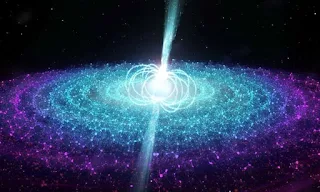Introduction:
‘Higgs boson’ is an elementary
particle in standard model of particle physics produced by the quantum
excitation of the Higgs field one of the field in particle physics theory. It
is named after the physicist Peter Higgs, who in 1984 along with other scientists
proposed the mechanism which suggested the existence of such a particle. The
existence was confirmed in 2012 by the ATLAS & CMS collaboration based on
collisions in the LHC at CERN.
The Brout -Englert –Higgs mechanism:
In the 1970s,
physicists realized that there are very close ties between two of the found
fundamental forces – the weak force & the electromagnetic force. The two forces can be described within the
same theory, which forms the basis of the Standard Model. This ‘unification
’implies that electricity are all manifestation of a single underlying force
known as the electroweak force.
The basic equations of
the unified theory correctly describes the electroweak force & its
associated force carrying particles, namely the photon & the W & Z
bosons, except for major glitch. All of these particles emerge without a mass.
While this is true for the photon, we know that the W & Z have mass, nearly
100 times that of a proton. Fortunately, theorists Robert Brout, Francois Englert & Higgs made a proposal that was to solve this problem.
What we now call the Brout-Englert –Higgs mechanism gives a mass to the W &
Z when they interact with an invisible field, now called the ‘HIGGS FIELD’,
which pervades the universe.
At CERN on 4 July, the
ATLAS & CMS collaborations present evidence in the LHC data for a particle
consistent with a Higgs boson, the particle linked to the mechanism proposed in
the 1960s to give mass to the W,Z & other particles.
Just after the big
bang, the Higgs field was zero but as
the universe cooled and the temperature fell below a critical value the field
grew spontaneously so that any particle interacting with it acquired a mass.The more a particles interact with the field, the heavier it is. Particles
like the photon that do not interact with it are left with no mass at all. Like
all fundamental fields, the Higgs field has an associated particle the Higgs
boson. The Higgs boson is the visible manifestation of the Higgs field, rather
like a wave at the surface of the sea.
The Elusive Particle:
A problem for the many years has been that
no experiment has observed the Higgs boson to confirm the theory. On 4 July
2012, the ATLAS and CMS experiments at
CERN’S Large Hadron collider announced they had each observed a new particle in
the mass region around 125 Gev. This particle is consistent with the Higgs boson
but it will take further work to determine whether or not it is the Higgs
boson, as proposed within the standard model, is the simplest manifestation of
the Brout –Englert –Higgs mechanism.
On
8 october 2013 the Nobel prize in physics was awarded jointly to Francois
Englert & Peter Higgs for the theoretical discovery of a mechanism that
contributes to our understanding of origin of mass confirmed through the
discovery of the predicted fundamental particle, by the ATLAS & CMS
experiments at CERN’S Large collider.”
SUBMITTED BY:
Likhitha B
Malavika Ajith
Meghana RV



















